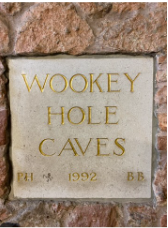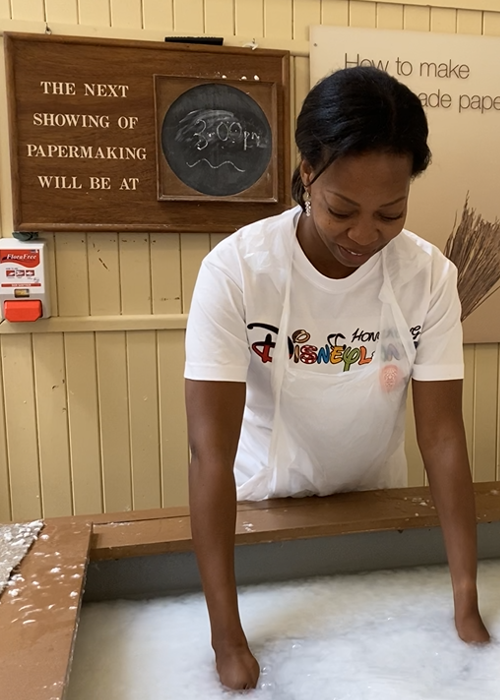Have you ever thought about watermarks? I bet you haven’t given any thought to watermarks!
Well neither had I until, I had a visit to Wookey Hole in Somerset recently and discovered the history of watermarks. Here is how, I created my very first watermark. One of the activities at Wookey Hole was a paper making workshop, and through this activity I learnt about watermarking.
While aimed at children, I was way too curious, so after all of the children had turns in making paper, I asked to have a go as I believe by doing we remember much better. So much so that I am capturing my experience this blog post.

A bit about Me
Before we go any further, let me share a bit more about myself. I am a #TechWomen100 award winner who has built a portfolio career as an education consultant, coach and author. I am curious about technology and am fascinated about the history and evolution of tech. Through my work, I also seek to bridge the #digitaldivide through sharing knowledge and insights. You can read more about me here
Examples of Watermarks
Let me share with you some examples of watermarking with which you may be familiar. Watermarks can appear on photos, on money, on products and in desktop applications, such as in Microsoft Word documents. It is essentially a way of showing copyright and ownership. Watermarking is designed not to be easily spotted.
Let’s investigate
Usually when you hold a document up to the light you can then see the watermark, this is a security feature. It shows that it is an original and it belongs to that person/organisation. It is a form of protection for you and authentication.

Making paper
So let’s go back a step back to paper making. Paper is made from plant fibre, such as cotton or hemp. Or any plant fibre you may wish to use. It is then soaked in water, then put into its shape, for example A4 and then dried in that shape.
Early watermarks
The very first watermarks were essentially your handprint. So when the paper was wet, you put your hand into the “wet paper” and made your watermark. This is much easier to understand when seen – see my video here of me making paper.
Ancient links and AI Disruption
Papermaking first originated in China, a very long time ago and has generally stood the test of time. However, fast forward to today and the disruption caused by generative artificial intelligence (GEN AI). There is lots of talk around using Watermarking to identify digital media created by GEN AI, this is currently still in its infancy and due to having lots of vulnerabilities. However, this seems to be one way of ensuring some level of authenticity. Watch this space, I too am keen on seeing this work in practice.

Inserting a Watermark in Microsoft Word
As an author/writer, watermarking is a feature I use quite a lot, as a form of protecting manuscripts and other works. I am just glad I now know the origins. If you don’t know, how to insert a watermark, (yes you can “google it”), but to help you, here is a quick instruction, if you are using Microsoft Word. Head to the Design tab and from there you will be able to find the Watermark feature – customise it as required for your work.
I am now off to consider if I have the time to attempt to make paper from plant fibre. I have identified celery as a contender, as it is cheaper. Have you tried to make paper? What do you think of water-marking? Please share this article on social media and let me know your thoughts.
_____
Are you seeking a #ghostwriter or #writer for your next article? Or seeking to commission a columnist with a flair for tech? Please do reach out via the contact form on this website